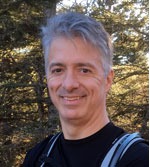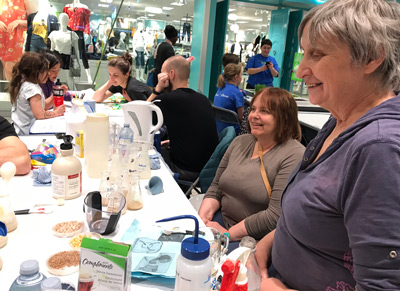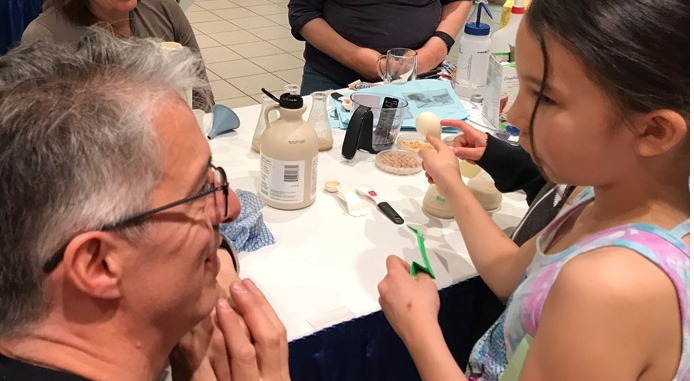 I spent last Saturday at the mall spooning sugar, maple syrup, and stevia into flasks with yeast and warm water to blow up balloons in the service of science education.
I spent last Saturday at the mall spooning sugar, maple syrup, and stevia into flasks with yeast and warm water to blow up balloons in the service of science education.
Our experiment was one of several stations at the Science Zone at Ag in the City, an annual event here in Saskatoon. We were finding out which sweetener worked best to feed yeast. While we were spooning, pouring, mixing, and carefully stretching balloons over the mouths of flasks, I had to spontaneously come up with some patter for our “Fun with Fungi” station. In the process, I learned a few things.
Look for real-life relevance
I found myself wracking my brain to come up with a way to explain things in ways that kids could understand – whether they were in Grade 1 or Grade 6. I pointed to the bubbles in the flasks, and explained these bubbles were carbon dioxide, which we exhale with every breath. The yeast “exhaling” into the bread they ate in their breakfast toast ensured it was nice and full of bubbles – soft and spongy instead of stiff and hard like a hockey puck.
Don’t forget Mom and Dad
While the kids were engaged at table side, their parents were watching and listening, so we tailored a bit of content for them. I explained that yeast produce ethanol, a type of alcohol that the kids’ parents might enjoy in a glass of beer or wine. You can even use alcohol to fuel your car!
 Why do we need to know this?
Why do we need to know this?
Our station lead, Mary Leggett, is a retired scientist whose former employer markets a product based on a soil fungus. It liberates phosphorus bound in the soil so the plants can use it – a sort of “biofertilizer.” We explained that since this product is sold around the world, we need a lot of it – and that means finding out exactly what to feed the fungi so they can grow. Our yeast experiment was an example of what company scientists had to figure out to produce their biofertilizer.
Use appropriate language
We realized that the kids – and maybe the adults – wouldn’t know a lot about fungi. So we looked for common examples such as mushrooms being one (technically, the spore-producing bodies of fungi, but we backed away from getting too geekily precise!). When we explained how the biofertilizer worked, we didn’t say it liberated phosphorus bound in the soil to make it bioavailable. Instead of “bound to the soil,” I said, “stuck to the dirt.” The fungi “unsticks it” so the plants can use it. Phosphorus is a plant nutrient, so we compared it to the vitamins and nutrition that the kids were familiar with.
Don’t assume “everyone knows that”
Ag in the City is intended to help bridge the information gap between city dwellers and our country cousins. That gap can be significant. For example, at the Agriculture in the Classroom Saskatchewan 25th anniversary celebration last week, an elementary school teacher shared an anecdote. She had asked a couple of her 30-something colleagues if they knew where oats came from. One just straight up said, “no,” while the other made up an answer, that oats were a byproduct of wheat processing. This, in a school only a couple of kilometres from an oat field.
There is no shame in not knowing something. I, personally, am ignorant of many things (how to fold a fitted sheet is something that continues to elude me). But recognize that ignorance can be embarrassing, and explain simply and clearly without being condescending.
What people do for a living is a small part of who they are
As we finished with one run of our yeast experiment, a young man stayed behind for what turned out to be quite a stimulating conversation. We talked about what constitutes heritage seeds and the purpose of the “doomsday” seed vault in Svalbard, Norway. We talked about genetic engineering and the exciting possibility of someday eradicating malaria using CRISPR and gene drives. I assumed I was talking to a grad student, so when I asked him his name (Ryan), I asked what he did for a living. “I’m a drywaller,” he said.
Get yourself out there
About half an hour later, Ryan was back with a pen and a piece of paper, asking for the address of my blog. I had to tell him, somewhat sheepishly, that I don’t have one. Yet. Guess what job just got kicked up my priority ladder?
Photos by Michael Robin.
